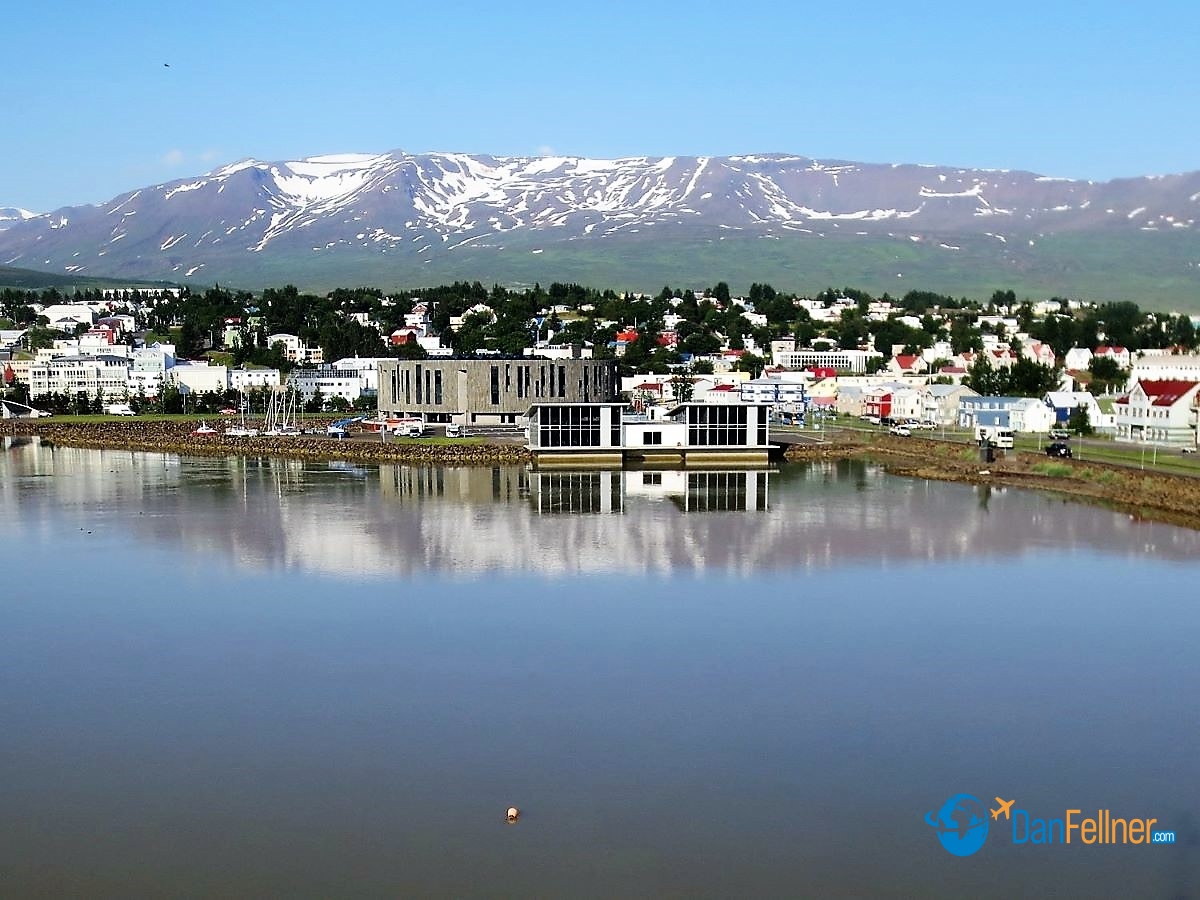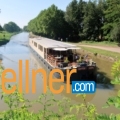North Atlantic country highlight of Holland America’s “Voyage of the Vikings”
The Arizona Republic — August 25, 2013
AKUREYRI, Iceland – “If you don’t learn the correct pronunciations for each port, we’re not going to let you go ashore.”
I was in deep trouble. About 1,250 passengers and I were sailing in the north Atlantic on a 17-day “Voyage of the Vikings” cruise on the Holland America Veendam. Joseph L’Episcopo, one of the ship’s lecturers, was briefing us about the three tongue-twisting ports we would be visiting the following week in Iceland – Isafjordur, Akureyri and Seydisfjordur.

The Holland America Veendam docked in Seydisfjordur, Iceland.
Of course, we knew that L’Episcopo was kidding. But had that edict been strictly enforced, I surely would have missed seeing one of the most stunningly scenic countries on Earth.
For Iceland offers a seemingly never-ending array of narrow fjords bordered by steep snow-capped mountains, tiny fishing villages, wildlife, glaciers, waterfalls, and enough volcanoes and geothermal activity to make it a geologist’s paradise.
It also has some of the most difficult-to-pronounce locations anywhere, none more notorious than the volcano Eyjafjallajökull. Its 2010 eruption brought air traffic in northern Europe to a virtual standstill for several days, giving elocution-challenged newscasters fits in the process.
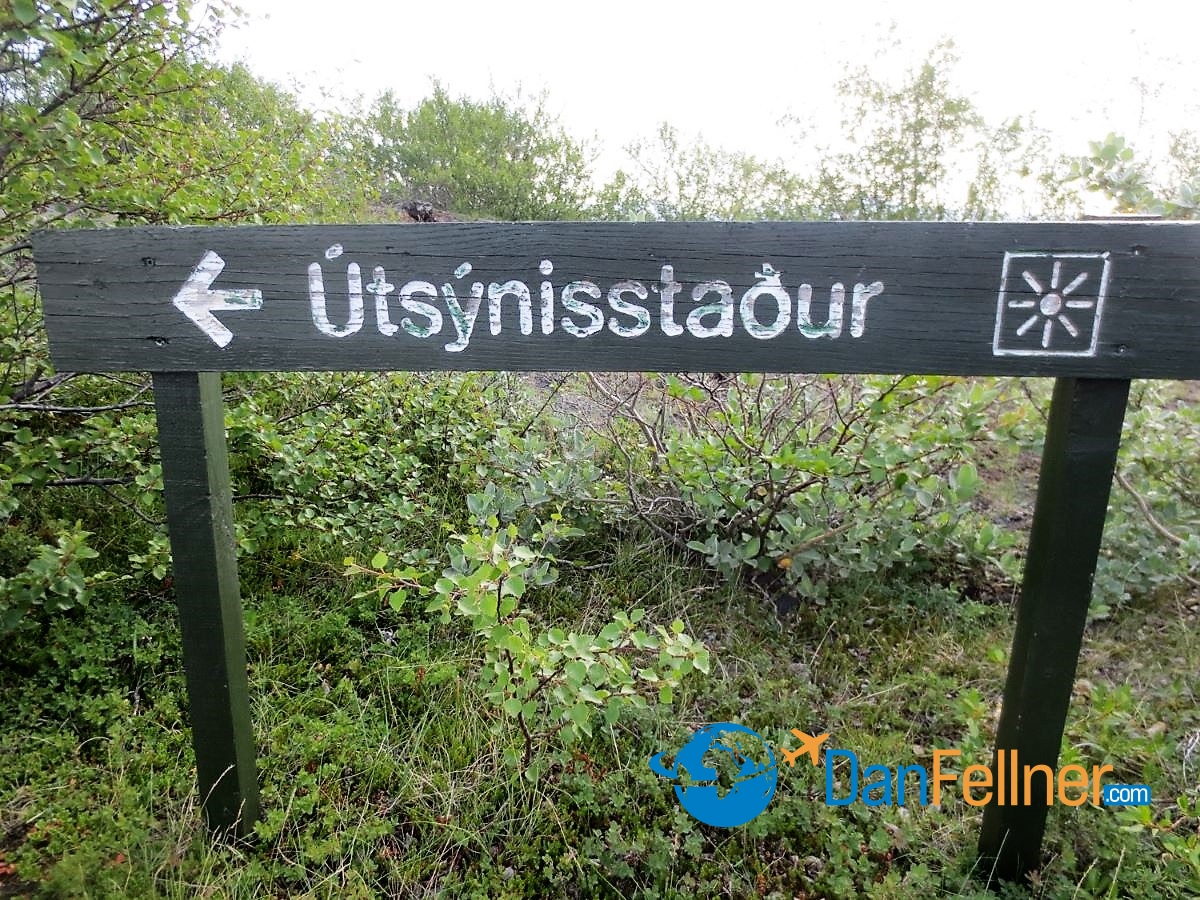
Iceland has some of the most difficult-to-pronounce locations in the world.
The Veendam had set sail across the Atlantic from Boston to Amsterdam, with stops in the Canadian province of Newfoundland and Labrador, Iceland, the Faroe Islands and Norway. We also had been scheduled to stop in Qaqortoq, a port in southern Greenland, but heavy ice flows and fog forced our Dutch captain, Pieter Bos, to alter course.
“Just like the Vikings more than 1,000 years ago, this trip is truly an adventure,” he announced over the ship’s public-address system, when we learned we wouldn’t make it to Greenland. Like Erik the Red and Leif Ericson centuries before us, we had witnessed firsthand the unpredictability of navigating these icy waters.

The scenic harbor of Isafjordur, Iceland.
About 75 percent of the ship’s passengers remained on the ship for the entire 35-day round-trip cruise that crisscrossed the Atlantic, starting and ending in Boston, so they were able to visit Greenland on the way back to North America. The remaining 300 passengers and I were booked for the first half of the journey and left the ship in Amsterdam for a return flight home.
I was most looking forward to visiting the three ports in Iceland, and they more than made up for the disappointment of not reaching Greenland.

An Icelandic folk dancing performance in Isafjordur.
The small island — about the same size as Kentucky – lies between Greenland and Scandinavia. It became independent from Denmark in 1944 and has a population of about 320,000. Icelandic is the main language, although English is widely spoken.
Despite the country’s frigid name and northerly latitude, warming ocean currents keep the climate relatively moderate. Our three days in port were gloriously sunny, with highs in the upper 50s.
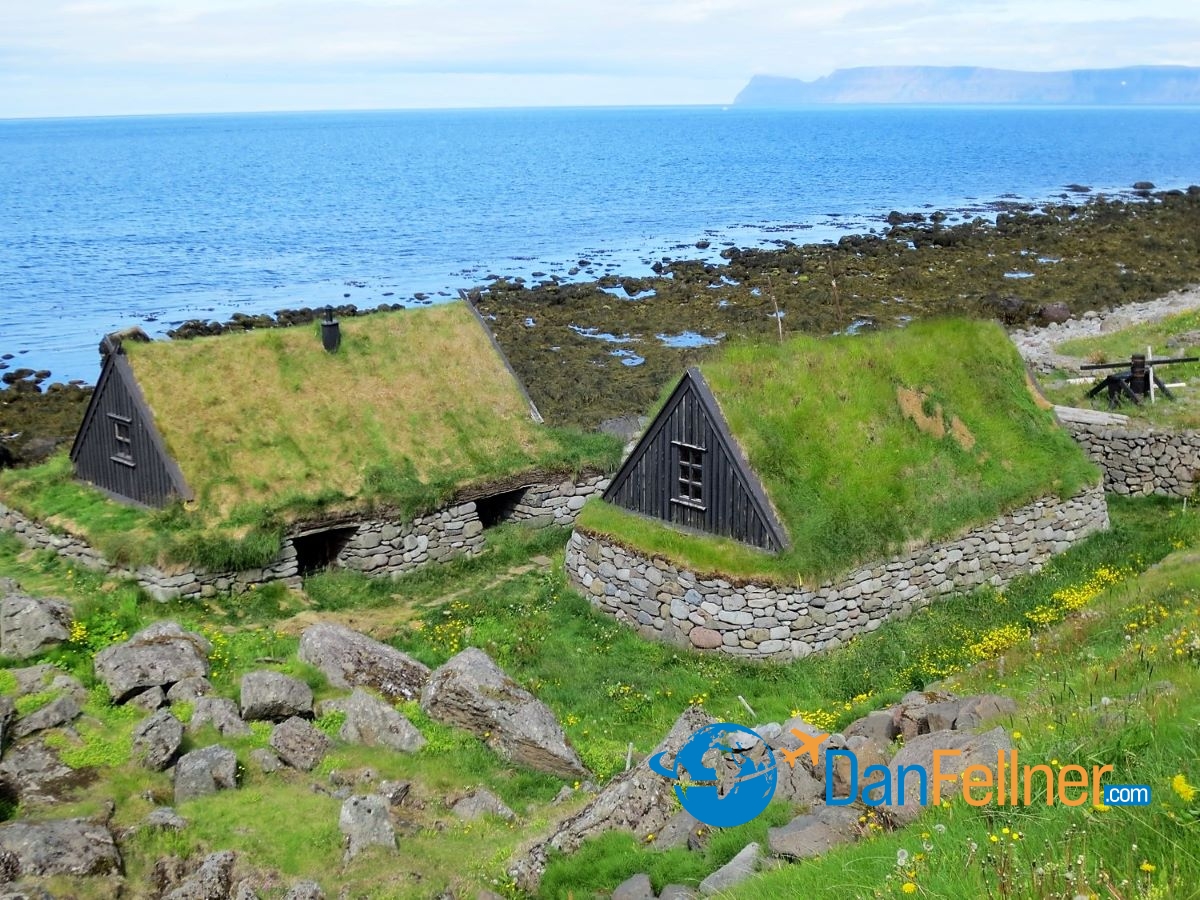
Old fishing huts with thatch-covered roofs in Iceland.
Our first stop was Isafjordur, a fishing town of about 2,600 people with the largest harbor in the northwestern part of Iceland known as the Westfjords. As we sailed into town, I was awestruck by the magnificence of the steep green and brown volcanic mountains – still topped with remnants from the winter snows — that towered over the harbor.
We visited the Osvor Maritime Museum overlooking the sea and learned about the lives of the Icelanders who have fished these waters for centuries. Old fishing huts topped with grass roofs were on display, and freshly caught salted cod was drying outside on rocks, a technique still used to preserve fish.
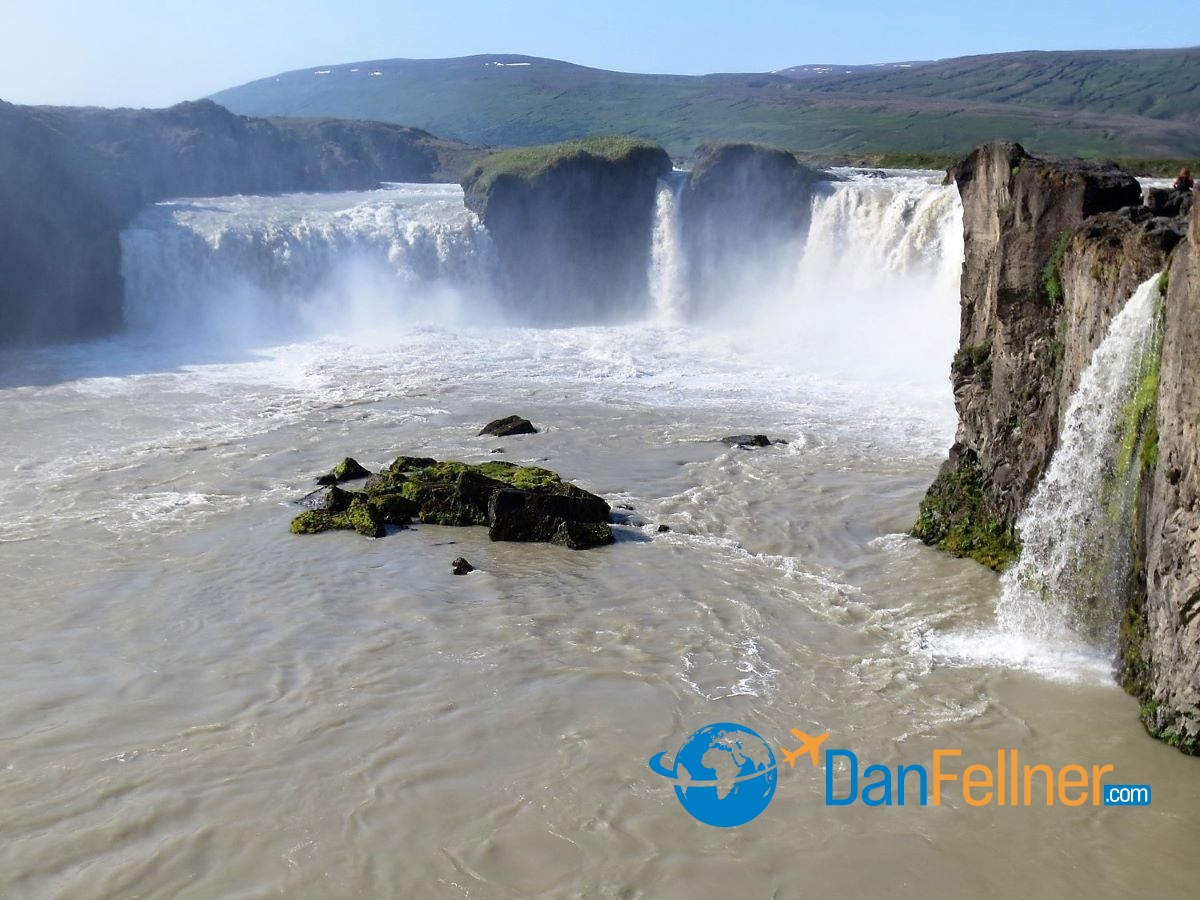
Iceland’s famous waterfall Godafoss (“Falls of the Gods”).
I most enjoyed the next day’s port stop, Akureyri, known as the “Capital of North Iceland.” Located at the head of the longest fjord in the country, Akureyri has just 17,000 residents but ranks as Iceland’s fourth-largest city.
Akureyri is a gateway for some of Iceland’s most scenic treasures, including the famous waterfall called Godafoss (“Falls of the Gods”). Like most of the country’s natural wonders, the waterfall is steeped in Icelandic folklore and the locals believe it played an important role in the country’s conversion to Christianity more than 1,000 years ago.

A majority of Iceland’s population are members of the Lutheran Church.
As our tour bus drove farther into the Icelandic countryside, past sheep and pony-sized Icelandic horses grazing in green valleys, I noticed there were virtually no trees. Indeed, the country is known for its mostly treeless terrain.
“If you get lost in an Iceland forest, all you have to do is stand up,” joked Kristin, our guide. “The trees here are so short.”
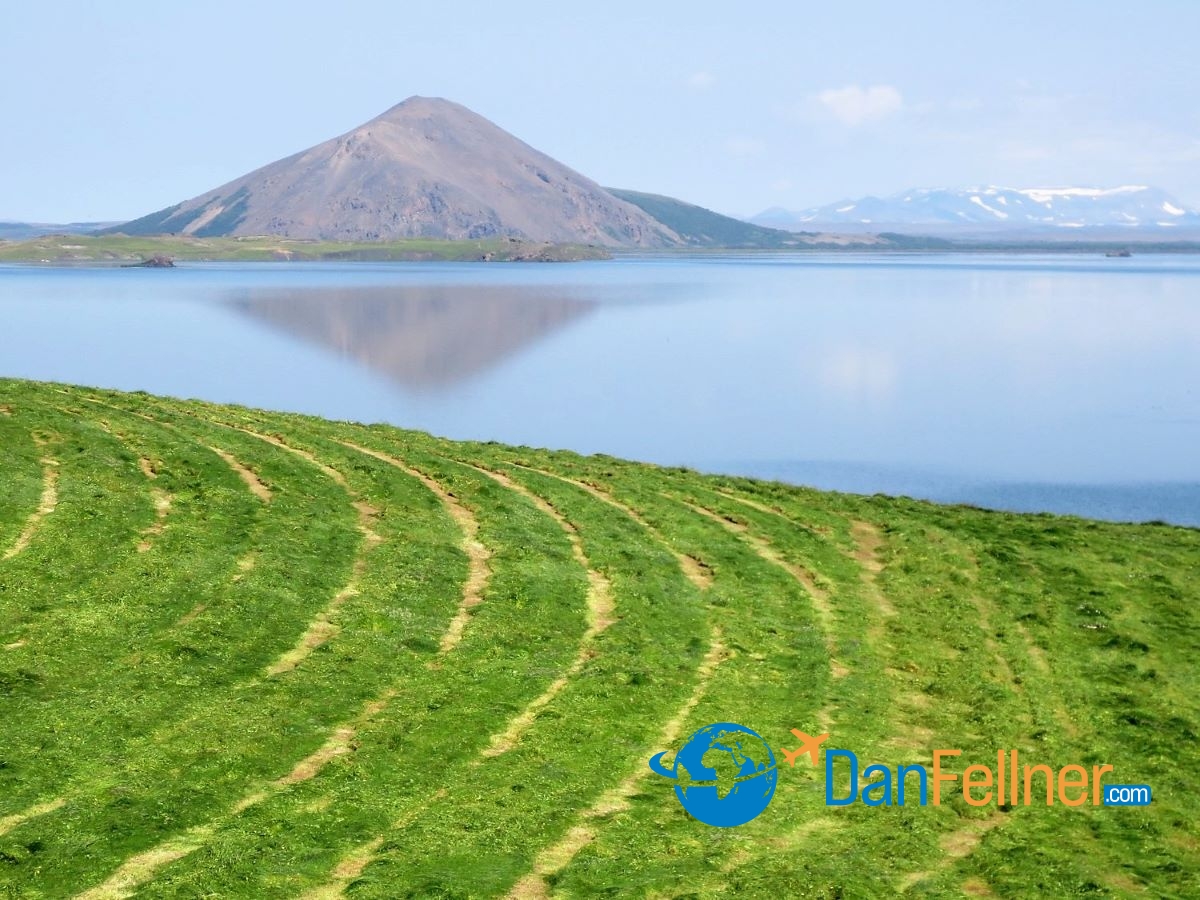
Lake Myvatn was formed during a massive volcanic eruption 2,300 years ago.
We soon reached Lake Myvatn, which was formed during a volcanic eruption 2,300 years ago and remains geothermically active today.
But observing the lake’s beauty comes with a price. Myvatn in English translates to “midge,” and as soon as we approached the lake’s dark-blue water, we found ourselves enveloped in a thick cloud of the swarming flies. Fortunately, these pesky bugs rarely bite.
After lunch of freshly caught salmon at a country hotel, we stopped for a hike at Dimmuborgir, known by the locals as the “dark city” because of its unusually shaped lava formations. Look closely, they believe, and you can see a mischievous elf or troll lurking about.
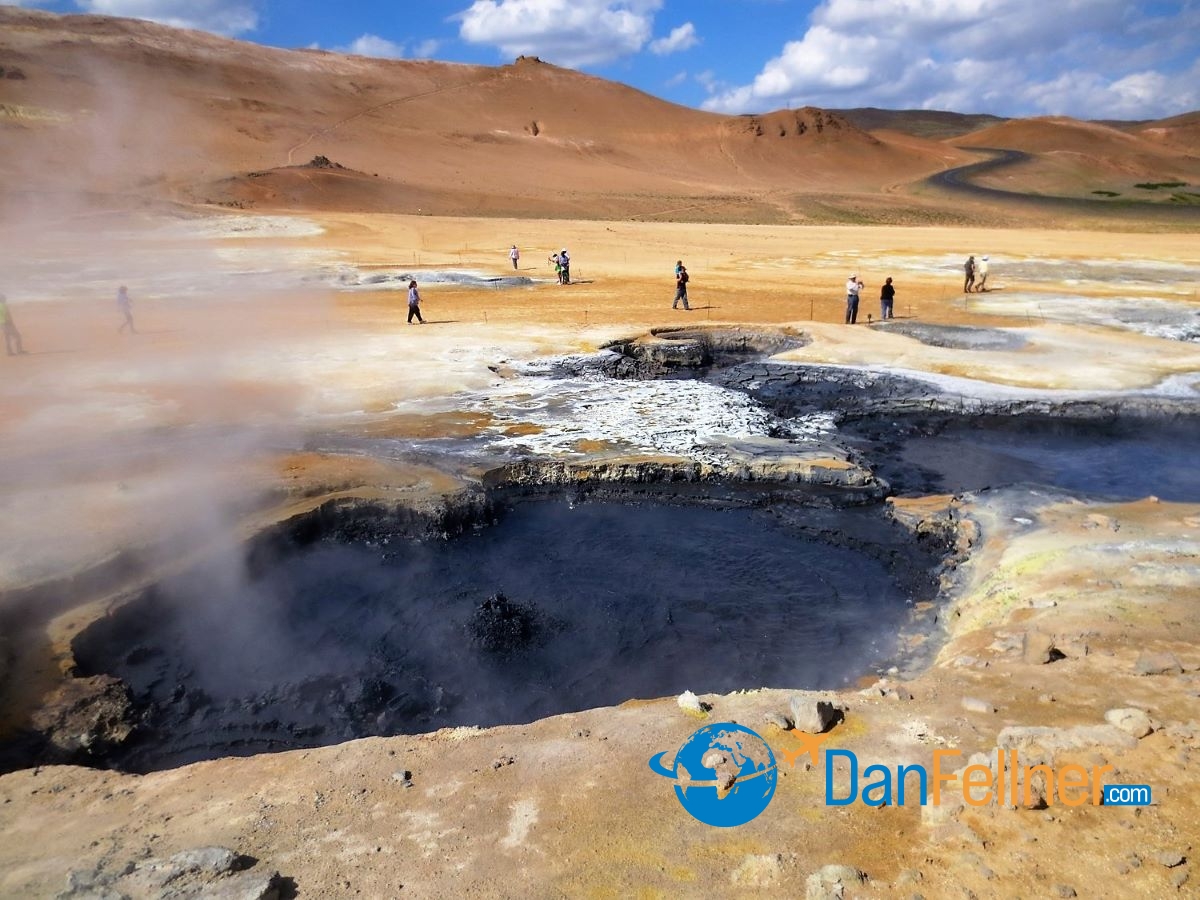
With boiling mud pools and steam-emitting fumaroles, Namafjall is a center of geothermal activity.
The highlight of the day was a visit to a center of geothermal activity called Namafjall, a lunar-like landscape with numerous boiling mud pools and steam-emitting fumaroles. There was a heavy scent of sulfur in the air. That minor inconvenience was more than offset by the wondrous views of a place that looked like the set of a science-fiction movie.
After we set sail from Akureyri, the Veendam briefly crossed the Arctic Circle before heading south to our next port.
To commemorate the occasion, the ship organized a “Polar Bear Plunge,” in which dozens of passengers simultaneously jumped into the swimming pool, a tradition designed to appease the Viking gods. Later, we received certificates signed by the captain signifying that we had crossed the Arctic Circle.

Veedam passengers take the “Polar Bear Plunge” to commemorate crossing the Arctic Circle.
Our third and final stop in Iceland – Seydisfjordur – was smaller than the first two ports but just as picturesque. The town, surrounded by mountains, has fewer than 700 residents. It is perhaps best known as having the largest collection of 19th-century wooden buildings in the country, many of which were prefabricated and shipped from Norway.
Because of high import duties and sales taxes, Iceland is one of Europe’s most expensive destinations. That makes cruising there an excellent way to visit, as travelers are less affected by high hotel and restaurant costs.
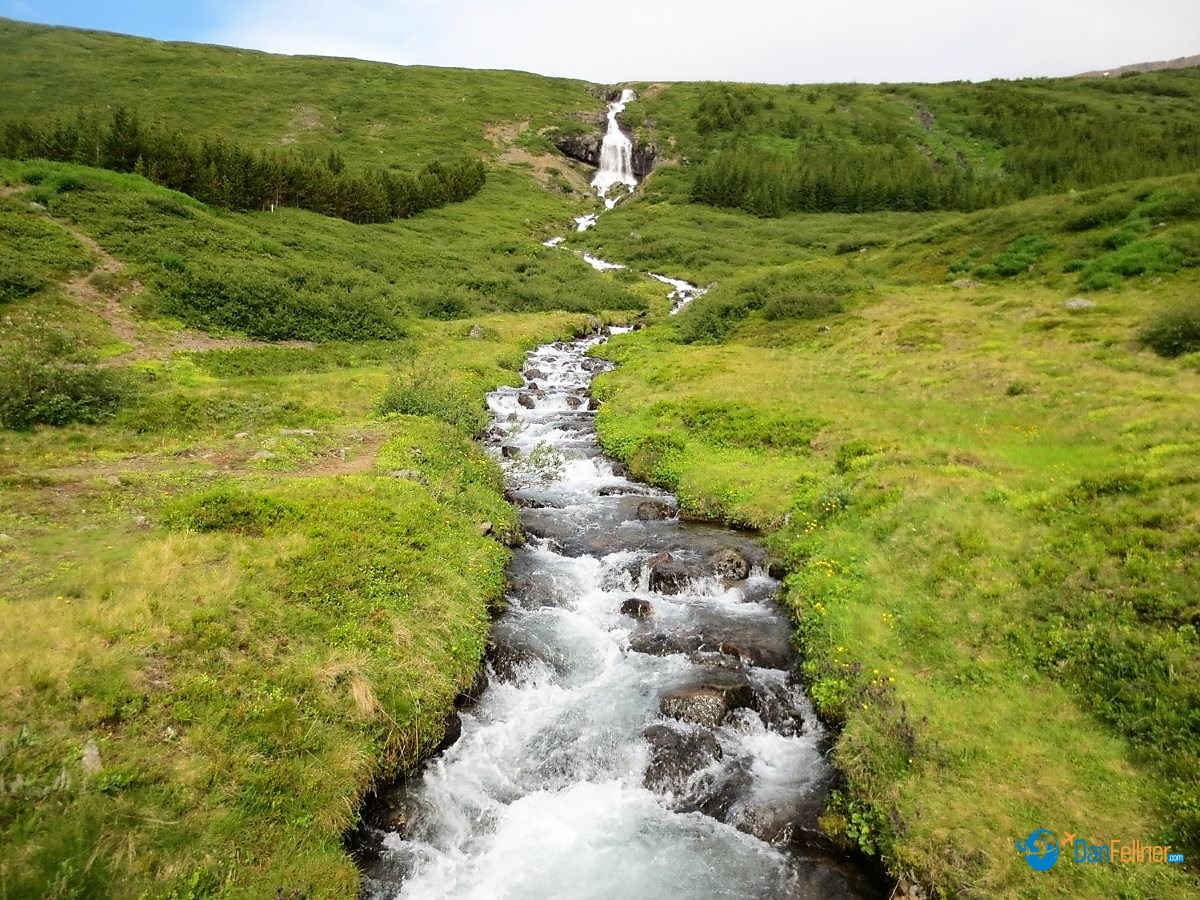
One of numerous waterfalls found in the Icelandic countryside.
It was not uncommon to overhear fellow passengers complaining about the sticker shock of souvenirs and other items for sale in Icelandic shops.
On the return trip west from Amsterdam across the Atlantic to Boston, the Veendam stopped at three more Icelandic ports, including its largest city, Reykjavik. As I took only the first half of the voyage, I regretted not seeing Reykjavik, the world’s northernmost capital of a sovereign country.
Not to mention the fact that I actually knew how to pronounce it.
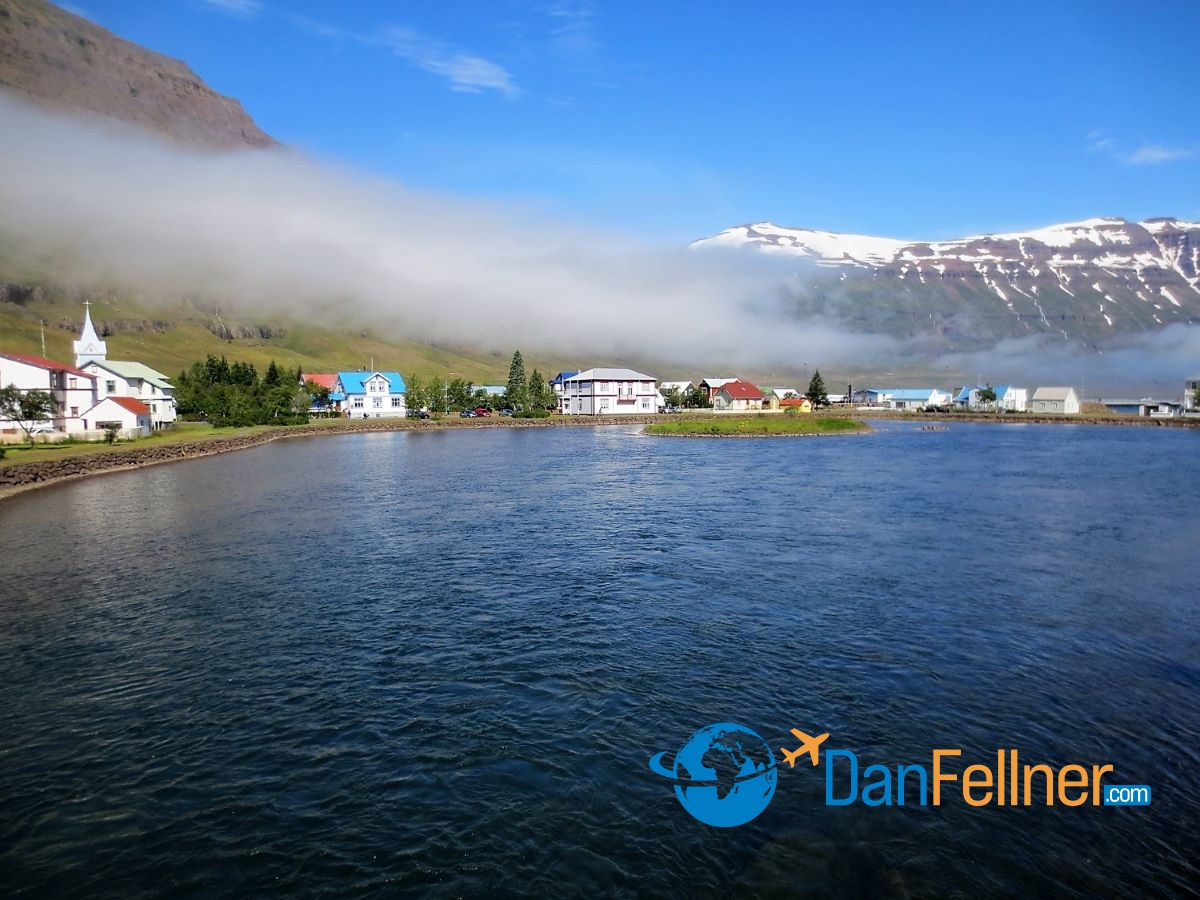
Seydisfjordur, Iceland.
© 2013 Dan Fellner

